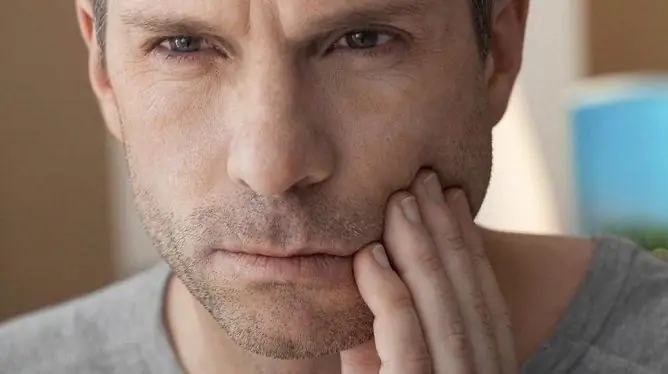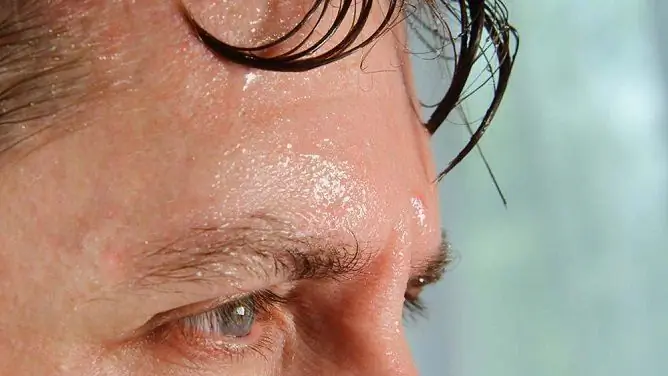- Author Rachel Wainwright [email protected].
- Public 2023-12-15 07:39.
- Last modified 2025-11-02 20:14.
Which doctor treats osteochondrosis?
The content of the article:
- Specialist for consultation
- Where is help
- General information about the disease
- Video
Which doctor treats osteochondrosis? There is no unequivocal answer to this question - it all depends on the stage, form of the disease and the stage of treatment.

At different stages of the disease, osteochondrosis is treated by different doctors
Specialist for consultation
Since the disease does not have specific clinical manifestations, which doctor treats osteochondrosis of the cervical spine depends on the primary complaints and the clinical picture, since the diagnosis may be somewhat delayed. If several symptoms from the spinal column occur, consultation of one or more specialists is indicated as part of helping patients at the abulatory-polyclinic level:
| Specialist | Characteristic |
| General practitioner or general practitioner | At the initial stage, complaints and general laboratory parameters (general blood and urine analysis, biochemical blood test) are assessed to identify the severity of the disease and determine the direction of further consultations. The therapist does not directly treat the pathology itself. He conducts a rough differential diagnosis - any disease manifested by back pain without correction for the spine is taken into account - and gives a referral for further examination (most often to a neurologist). |
| Neurologist |
He is engaged in the treatment of only mild or moderate forms of osteochondrosis. At this stage, more detailed studies are assigned (for example, X-ray of the spinal column) to determine the degree of the disease. Differential diagnosis is of a highly specialized nature (osteochondrosis, intervertebral hernia). When the diagnosis is confirmed, a treatment regimen is selected (chonroprotectors, non-steroidal anti-inflammatory drugs, bisphosphonates, muscle relaxants). |
| Trauma surgeon | A specialist consultation is indicated for pronounced anatomical and structural changes in the tissues. As a rule, the consultation of this specialist is prescribed in order to determine the surgical tactics of treatment. In this case, it is permissible to prescribe high-precision diagnostic studies for the purpose of differential diagnosis (CT, MRI, bone densitometry, spondylography). As a treatment, various options for blockades (lidocaine or novocaine) are often used, but classical medications are also used. |
| Neurosurgeon | The consultation of this specialist is indicated if there is a suspicion of such a complication of osteochondrosis as an intervertebral hernia (convincing CT or MRI data). |
| Physiotherapist |
As a rule, physiotherapy serves as the final link in the treatment of pathology. It is used to eliminate the clinical manifestations of osteochondrosis (as part of conservative therapy) or in the postoperative period in order to accelerate rehabilitation. |
| Rehabilitologist | The doctor is more associated with the postoperative period of the disease, but may be necessary in the absence of surgery. Treatment includes a special set of exercises (exercise therapy). The selection is strictly individual. |
| Chiropractor | The consultation of this specialist may be based on the recommendation of a therapist or neurologist. It is prescribed for the purpose of relieving pain syndrome (as part of conservative therapy). This group, somewhat conditionally, can be attributed to a vertebrologist - a specialist dealing with pathologies of the spine. |
| Rheumatologist | A consultation with him is appointed solely for the purpose of differential diagnosis with various forms of arthritis. |
| Oncologist |
In case of a questionable MRI / CT picture and atypical clinical manifestations, an oncologist's consultation is indicated in order to exclude benign and malignant diseases of bone tissue (for the final diagnosis in doubtful cases, biopsy is usually used, followed by histological and cytological examination). |
The presented scheme is conditional, since in each region it undergoes minor correction.
In addition, the scheme does not include diagnostic specialists (for example, radiologists). They describe only the signs of the disease with the help of one or another examination without a physical examination and a general clinical picture. Medium-level specialists are also involved in the treatment, for example, a massage therapist, whose task is to relieve reflex muscle spasm in order to reduce pain.
So, which doctor should you contact with cervical osteochondrosis? At the stage when the disease is only assumed - to a therapist (general practitioner), and in other cases it depends on a number of factors. You can also consult with a therapist or family doctor on this matter.
Where is help
At the hospital level, assistance is provided:
- In a therapeutic hospital. Only large clinics have separate specialized neurological departments. In small clinics, standard therapeutic departments are used for this purpose, which have neurological wards or beds. Assistance is provided by neurologists / therapists who have completed residency.
- In a trauma hospital. The patient is hospitalized in this department if there is a suspicion of severe forms of the disease with an anatomical disorder of the structure of the spinal column (pathological fracture). Help is provided by traumatologists.
- In a neurosurgical hospital. The patient is referred to this department if an intervertebral hernia is suspected as a result of long-term osteochondrosis. Help is provided by neurosurgeons.
The classical places of examination and treatment of patients with osteochondrosis are listed. If necessary, the list can be changed or supplemented.
General information about the disease
Osteochondrosis refers to degenerative-dystrophic lesions of the intervertebral discs with the involvement of the vertebrae and the adjacent neurovascular bundle. The spinal column loses its support function.
Damage levels:
- cervical segment;
- chest;
- lumbar;
- sacral (more often in combination with the lumbar segment).

A common symptom of osteochondrosis for all forms is pain
Flow phases:
- acute (up to 2-3 weeks);
- subacute phase (2-11 weeks);
- chronic phase (more than 11 weeks).
A. I. The base displays the sequence of the spread of pathology:
- Intradiscal pathological process. The disease spreads within the disc. Practically does not affect the normal life of a person (mild pain).
- Loss of fixation ability of the affected disc. At this stage, the vertebrae are displaced relative to each other due to the destruction of the articular surface. The emergence of pronounced compression of the surrounding tissues (nerve roots) is a matter of time.
- The stage of formation of herniated intervertebral discs. The release of the contents of the deformed disc outside the articular site. Depending on the direction of exit, medial, lateral, paramedial, anterior hernias are distinguished.
- Stage of fibrosis of the intervertebral disc. The final stage, which leads to a complete loss of mobility in this area of the spinal column. It arises as a result of fibrous degeneration of the destroyed disc tissues. The involvement of several vertebrae leads to disability.
The clinical picture is represented by the following syndromes:
- neurological;
- static;
- trophic;
- vascular.
With osteochondrosis, all of the listed clinical manifestations are present, but for each level of damage there is a dominant syndrome complex. For example, in osteochondrosis of the cervical spine, vascular manifestations dominate as a result of compression of the vertebral artery. The exception is pain - a typical and classic symptom that occurs to one degree or another in any form of the disease.
Video
We offer for viewing a video on the topic of the article.

Anna Kozlova Medical journalist About the author
Education: Rostov State Medical University, specialty "General Medicine".
Found a mistake in the text? Select it and press Ctrl + Enter.






